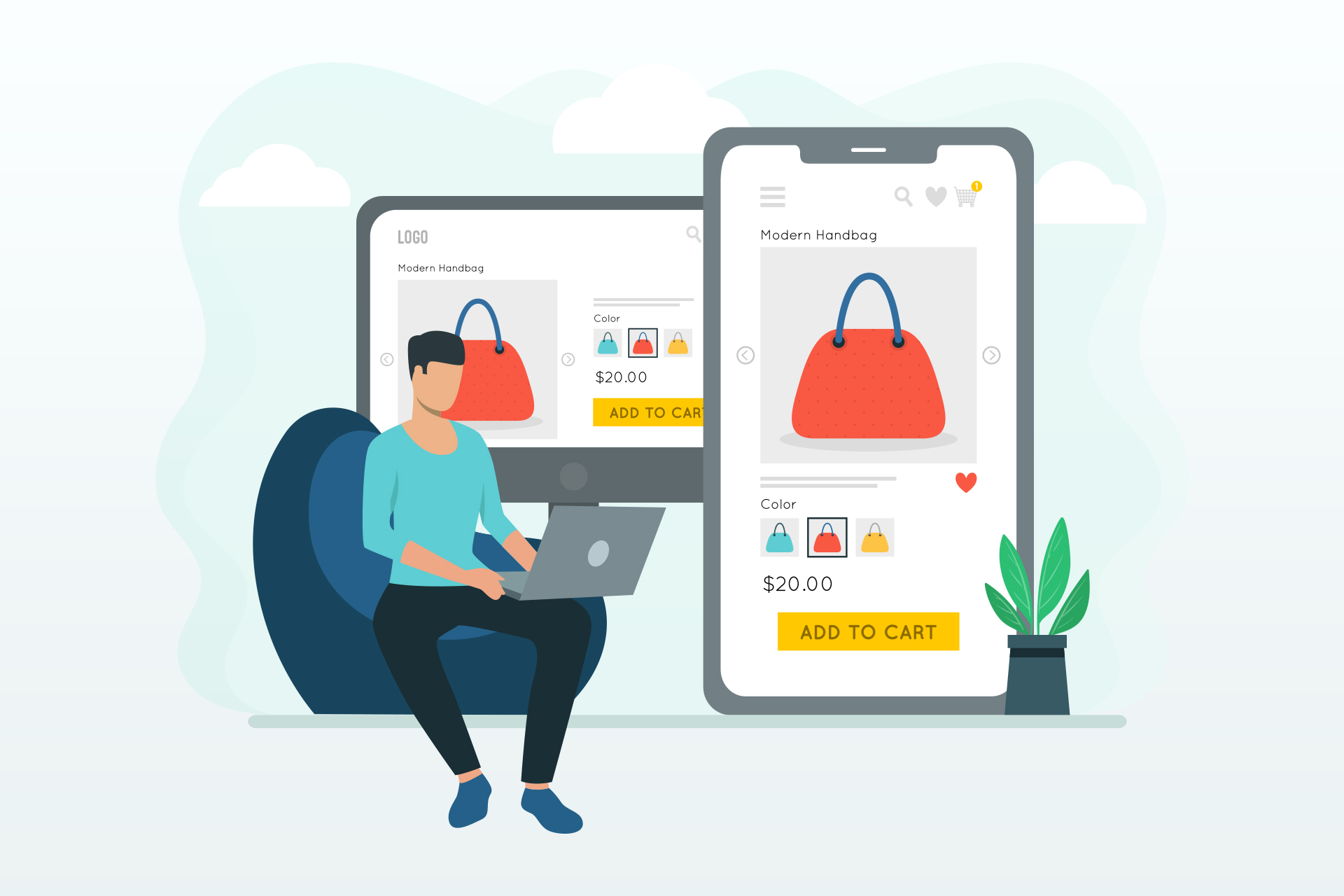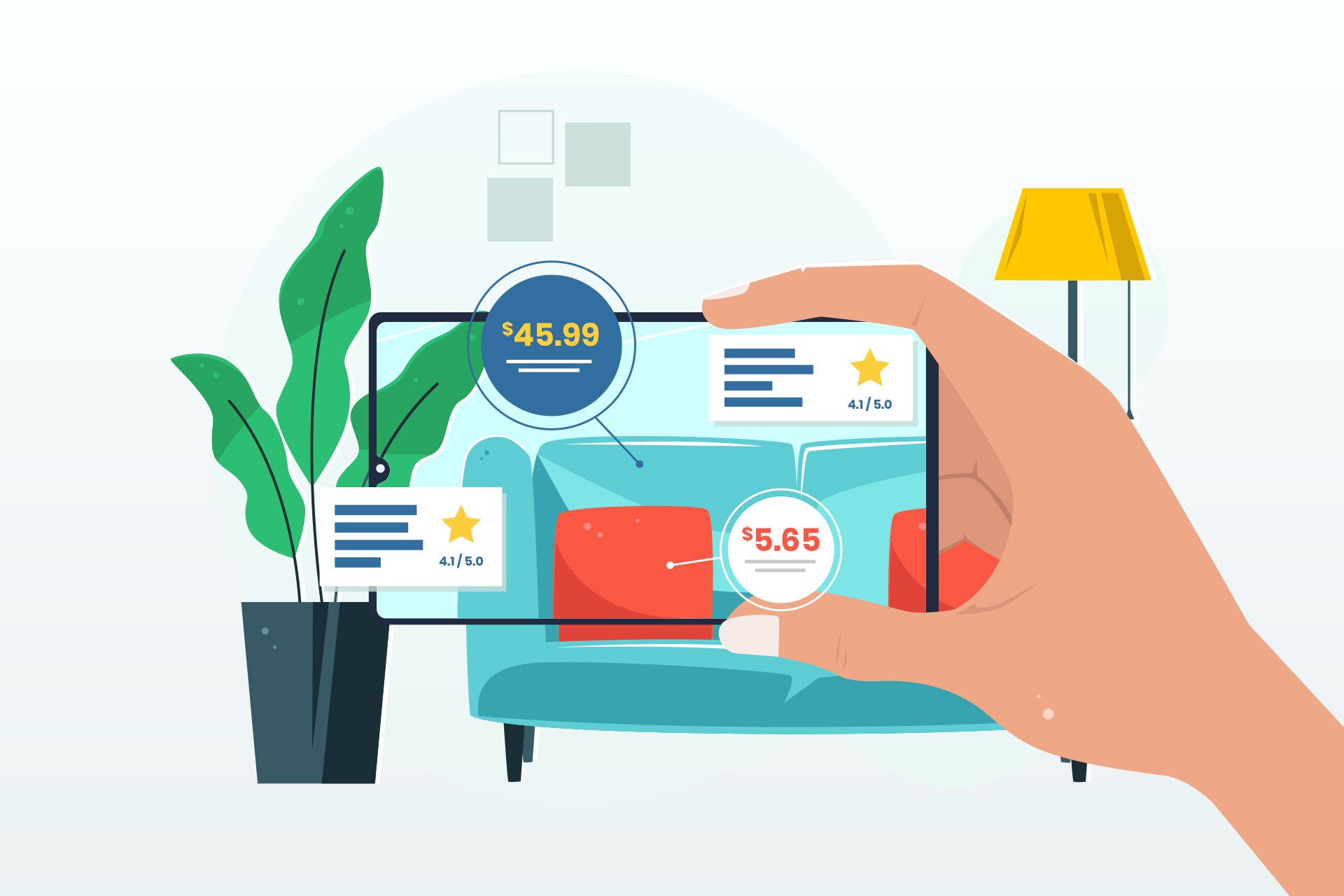2020 has made us learn quite a few lessons the hard way. But one realization that has dawned upon us all is that eCommerce is Future. While many businesses faced a tough situation during the global pandemic, it has also been one of the greatest times for some emerging startups. New ideas are flowing, new ways to reach people are coming up. From delivery through drones to having virtual classroom sessions, we are innovating for our needs. Advanced technologies are coming up each year leading to surprising trends hitting every sector of business. eCommerce isn’t left behind when it comes to unique trends. 2021 is definitely going to be full of greater innovations and better upgrades for eCommerce business. Want to know what might be in store for eCommerce in 2021? Read on…
Rise of Voice Commerce
How convenient would it be if you could ask Alexa to place your grocery order? Alexa and Google Home have been your assistant in reading out your daily news headlines or playing your favourite songs just through a command. But it has also taken the eCommerce industry by storm! Loup Ventures predicts that 75% of the US households will have smart speakers by the end of 2025. As of now, about 20% of smart speaker users are using their devices to do some kind of shopping related activities like searching a product, setting reminders for sales, tracking their deliveries, etc. By 2022, voice commerce sales is estimated to reach $40 billion in the U.S. and U.K. alone!
 Apart from the convenience that voice commerce provides, an important reason why it has been on the rise is its growing accuracy. Google and Amazon are pushing to incorporate as many local languages as possible into their voice devices namely Google Home and Amazon Echo. This has helped customers shop through their voice speakers more easily.
Apart from the convenience that voice commerce provides, an important reason why it has been on the rise is its growing accuracy. Google and Amazon are pushing to incorporate as many local languages as possible into their voice devices namely Google Home and Amazon Echo. This has helped customers shop through their voice speakers more easily.
But for your online store to utilize the potential of this trend, you need to optimize your store for voice search. Optimize your website content to increase the chances of your business to match the searches. Matt Janaway, CEO of MarketingLabs, suggests to elevate your conversion-inducing content to answer common customer questions based around your product. Value-based content neatly drops the customer into the conversion funnel leading them to eventually buying your products. For example, if someone asks for a cure to hair fall, a search result of your solution-based blog might lead to the customer actually looking for your product in the next step!
Make sure that your website and mobile app navigates well with voice command. No one wants to get stuck at your website when Alexa replies, “I don’t know what to do next” to your command! Ensure a smooth and simple checkout flow that can be easily followed through voice commands. With Alexa and Google Assistants raging through online shopping, this digital trend is set to soar in 2021.
Ease of Omnichannel Shopping
The term might sound new to a lot of people, so let’s get to know about it better. Omnichannel retailing refers to providing single customer experience across all devices used for shopping through unified sales and market targeting. This means that whether the customer uses his mobile phone or his laptop, he will experience seamless shopping experience in all his devices.
According to a survey by the Harvard Business Review, 73% of customers admit to have used multiple channels and devices while shopping online.
The goal here is to provide the optimum customer experience to the customer through all your channels. Use analytics tools to monitor customer behaviours and optimize your channels accordingly. For example, if you find out that your customers are more likely to shop from your website through their mobile phones, optimize your website for the same.

Moreover, mobile shopping has seen a spike in the recent years. By the end of 2021, mobile shopping would contribute to almost 73% of total eCommerce sales. But did you know that 30% of online shoppers will quit your website if it’s not mobile-friendly? Therefore, in order to ensure a seamless omnichannel shopping experience to your customers, focus on mobile shopping. A dedicated mobile app is a must for today’s retail world. But if you don’t have a budget for an app, consider creating AMPs (accelerated mobile pages). It’s basically a stripped-down form of an HTML which makes the mobile pages really fast. You can also try a PWA (progressive web app). PWAs load faster than a website and also helps your customers browse through your previously-visited pages offline. With the rise of mobile shopping and shopping through voice commands, this eCommerce trend is going to stay past 2021.
AI and AR enhancements
Artificial Intelligence has already been used in eCommerce. From relevant suggestions while shopping to assisting to customer queries, it can be safely said that AI has taken over online shopping. Online sellers would not hesitate to spend $7.3 billion on AI enhancements.
It works by analysing and remembering your customers preferences and shopping habits and provides them with valuable recommendations. A common example could be those live chat bots that popup with relevant information or suggestions while you shop or assist you in your queries. By the end of next year, more than 120,000 stores will implement AI techniques to provide better customer experience.
 While physical retail stores provide customers with the convenience of physically inspecting a product before buying, the touch-experience is missing in online shopping. Imagine if we could buy a certain makeup product by trying it on our face virtually! Yes, AR helps us do so! Augmented Reality (AR) is a recently developed AI feature that has augmented customer’s shopping experience to another level. This has proven to drive conversions by helping customers see the details of your products like size, scale and virtual appearance, thereby helping them choose your products.
While physical retail stores provide customers with the convenience of physically inspecting a product before buying, the touch-experience is missing in online shopping. Imagine if we could buy a certain makeup product by trying it on our face virtually! Yes, AR helps us do so! Augmented Reality (AR) is a recently developed AI feature that has augmented customer’s shopping experience to another level. This has proven to drive conversions by helping customers see the details of your products like size, scale and virtual appearance, thereby helping them choose your products.
A lot of brands like Lenskart and Maybelline have utilized AR to help customers judge the products on themselves and make a better choice. Consider offering a 3D view of your products to display its texture and shape from various angles for a 360 degree realistic experience. In the future, AR for larger items like home equipment and other goods would become more relevant. It’s important to equip your website and mobile app with AI and AR features as this has quite some potential in the coming years.
Sustainable Consumerism
People are gradually becoming concerned towards the environment and are taking steps towards a sustainable ecosystem. Subsequently, sustainable consumerism or green consumerism is on the rise. People are relying more on brands that care for the environment in the long run. Customers are looking for products that are produced in an eco-friendly way or can be recycled later. 65% of consumers prefer buying products from environment-driven brands that advocate sustainability.
A lot of eCommerce brands have already started taking green consumerism seriously. Amazon has pledged to reduce their carbon emission to zero by 2040. Nestlé is striving towards making 100% of its packaging reusable or recyclable by 2025. In another instance, the conglomerate giant, Unilever, reached its sustainability targets by acquiring 26 small and sustainable brands. These brands grew over 46% faster and delivered more than 70% of overall turnover.
 There are some great ways to attract green consumers to your brand. Take a clear stand on environmental issues and decide on your sustainability goals. Be vocal about your practices and deadlines for achieving your goals. Opt for green packaging like reusable bottles or paper bags, and promote e-receipts instead of paper bills. Take an initiative and look out for alternative and eco-friendly production of your products. The apparent shift of consumers towards environment-friendly products is a high indicator that this trend is going to stay.
There are some great ways to attract green consumers to your brand. Take a clear stand on environmental issues and decide on your sustainability goals. Be vocal about your practices and deadlines for achieving your goals. Opt for green packaging like reusable bottles or paper bags, and promote e-receipts instead of paper bills. Take an initiative and look out for alternative and eco-friendly production of your products. The apparent shift of consumers towards environment-friendly products is a high indicator that this trend is going to stay.
New payment methods
Use of internet banking or credit cards is almost a matter of the past now. Newer payment methods have emerged in the recent times that have made online purchases more convenient for shoppers. Digital wallets like Google Pay, Apple Pay and Samsung Pay are being widely used by online retailers. They contribute to about 41.8% share of total eCommerce transactions. eCommerce brands are incorporating new, varied and even local or country-specific payment options for seamless checkout. A lot of e-stores are compatible with Paypal, the worldwide leader of online payments solutions, as well as local payment methods like MangoPay and PayStack. Therefore, it’s imperative to make your online stores compatible with these payment methods.
 One payment method that might emerge as a popular option in 2021 is cryptocurrency. Cryptocurrencies like Bitcoin have several advantages over other payment methods. It has lower transaction fees, faster payments and is more secure than other options. Bitcoin is gradually venturing into a broader market. Overstack has partnered with Coinbase, a Bitcoin platform, allowing users to pay via their Bitcoins. The coming year might see Bitcoins on the rise, so you might want to adapt your eCommerce store with the same.
One payment method that might emerge as a popular option in 2021 is cryptocurrency. Cryptocurrencies like Bitcoin have several advantages over other payment methods. It has lower transaction fees, faster payments and is more secure than other options. Bitcoin is gradually venturing into a broader market. Overstack has partnered with Coinbase, a Bitcoin platform, allowing users to pay via their Bitcoins. The coming year might see Bitcoins on the rise, so you might want to adapt your eCommerce store with the same.
Every year, new technologies and innovations are being adapted by eCommerce markets. Some potential trends fail miserably by the end of the year but some trends emerge as mentionable breakthroughs. Our research and predictions say that these eCommerce trends are going to rule 2021. However, keep an eye to the latest developments and methods that can prove beneficial to your online business. We hope that 2021 becomes a year of success for all entrepreneurs with new and better ideas on the front.



Really good information. Wait for next..